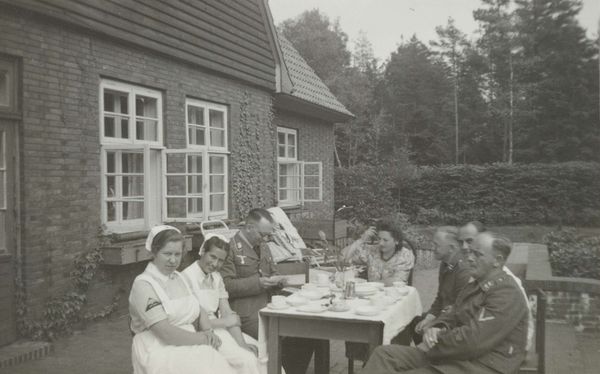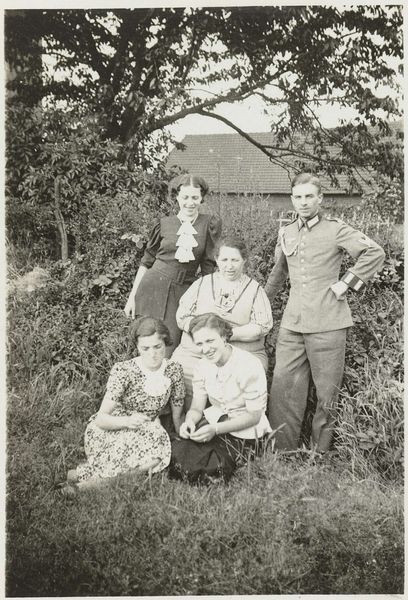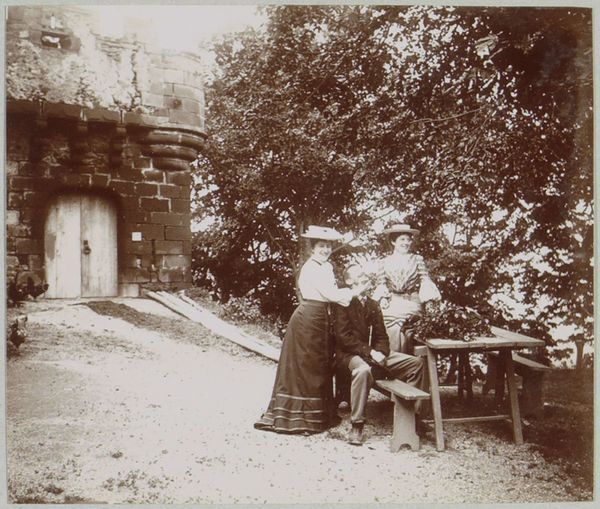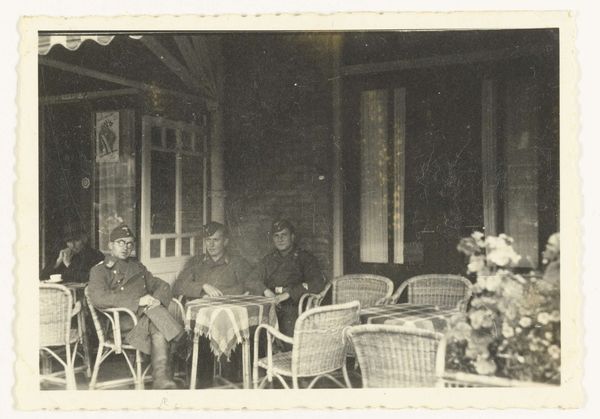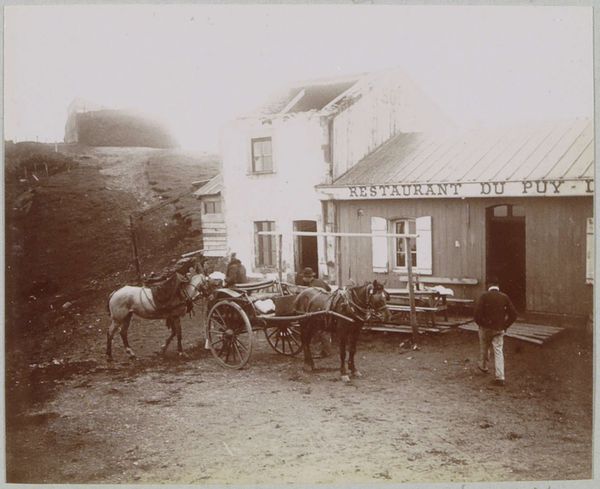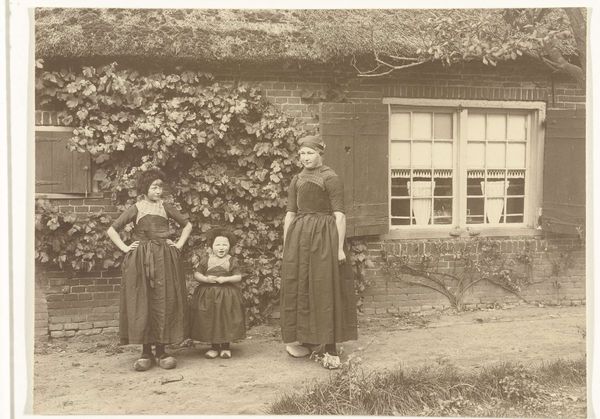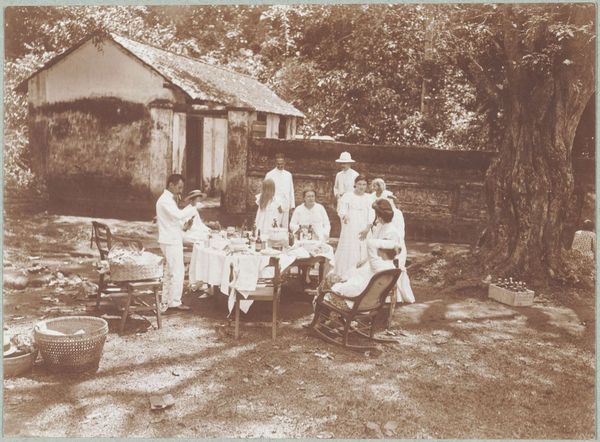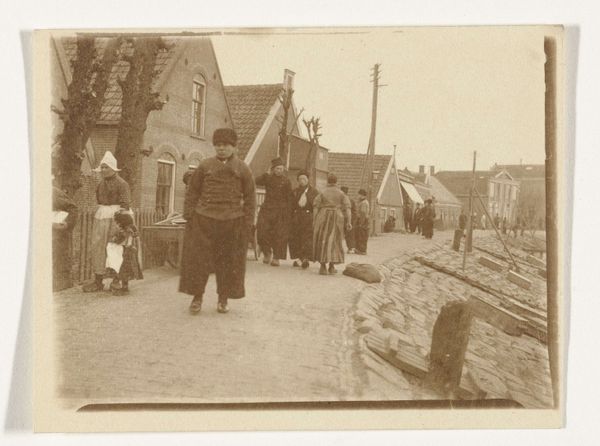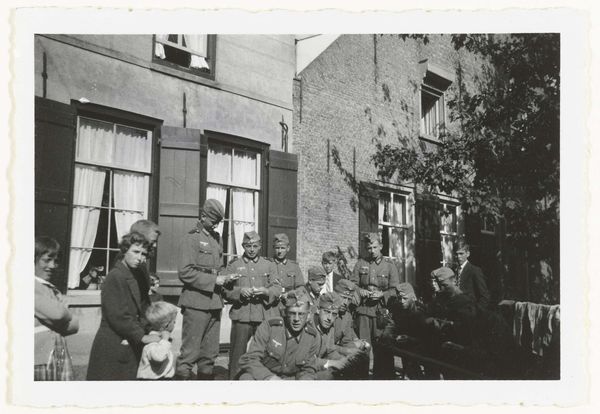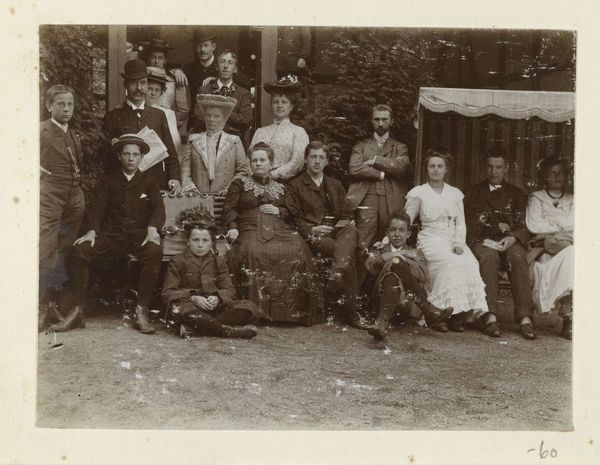
photography, gelatin-silver-print
#
portrait
#
print photography
#
archive photography
#
photography
#
historical photography
#
group-portraits
#
gelatin-silver-print
#
history-painting
Dimensions: height 5.5 cm, width 8.5 cm
Copyright: Rijks Museum: Open Domain
Curator: Well, this gelatin silver print titled "Luftwaffe militairen en verpleegsters" or, "Luftwaffe military personnel and nurses" feels…staged. Like a scene in a wartime play, attempting normalcy amidst chaos, from around 1940-1945. What’s your first reaction? Editor: The first thing that strikes me is the disconnect. We see Luftwaffe officers and nurses in what appears to be a casual outdoor setting. Yet, the air is thick with unspoken tension. The performative image of a relaxing time does little to mask the inherent power dynamics and ideology they represent. It's eerie how mundane evil can appear. Curator: Exactly! And perhaps it's because it's so... domestic. Ivy creeps up the brickwork, glimpsed through an open window and we sense a 'home.' However, that creates the uncanny mood: what does ‘home’ signify in times of war and military occupation? I see folks around the table, cups, but my eye wonders about what's unspoken between them. It’s unnerving to see supposed enemies seemingly sharing pleasantries. Editor: Precisely. And the setting itself speaks volumes. Consider the institutional architecture behind them. It frames them, literally. This isn't just any outdoor gathering. The image reinforces the idea that these individuals and their actions are sanctioned, supported by an entire structure—legal, political, and social. It naturalizes war and the individuals complicit in its atrocities, positioning them in a space typically associated with safety and community. Curator: So, does the photo glorify that complicity, or unwittingly critique it? The neutral tone resists any simple interpretation. Even their bodies—the central figures sitting rather stiffly—could mean anything! Are they enjoying the camaraderie or quietly resisting their roles? Editor: I believe the photograph, whether intentionally or not, exposes the banality of evil that Hannah Arendt spoke about. They are not monsters. They are people. But within a toxic system, and an unequal distribution of power, they enact monstrous things. So the photo might give the viewer an entry point to reflect on our human vulnerability and capacity to carry out wrongdoings within oppressive power structures. Curator: Hmmm. Thanks for turning my perception, or the potential reading of this archival photography upside down! This image speaks quietly. Editor: Quietly, but loudly. It whispers of everyday complicity and ideological control, a sobering moment to rethink visual history and challenge contemporary society's normalizations of war.
Comments
No comments
Be the first to comment and join the conversation on the ultimate creative platform.
